Movement types play a crucial role in SAP. They are responsible for moderating the movement of inventory in SAP, and they are also in charge of delivering the correct financial posting to the finance module. Such movements can be quantity-based, value-based, and most of the time, both.
The purpose of the inventory management module in SAP S4/HANA is about controlling the level of stocks in the plants and storage locations, and the movement types control those movements, be it a stock received from a vendor, a stock transfer between different company codes, or a good issue to a work order, there is always a 3 digit unique code that identifies that movement, which is called the movement type.
When a material movement is posted in the system, SAP automatically derives all the associated financial postings through what is called Automatic Account Determination. You can read more about it in my previous post.
For every movement of goods, SAP creates the following documents:
Material document – Always created.
Accounting document – Always created when the movement is valuated.
Financial document – This can be a controlling or material ledger document
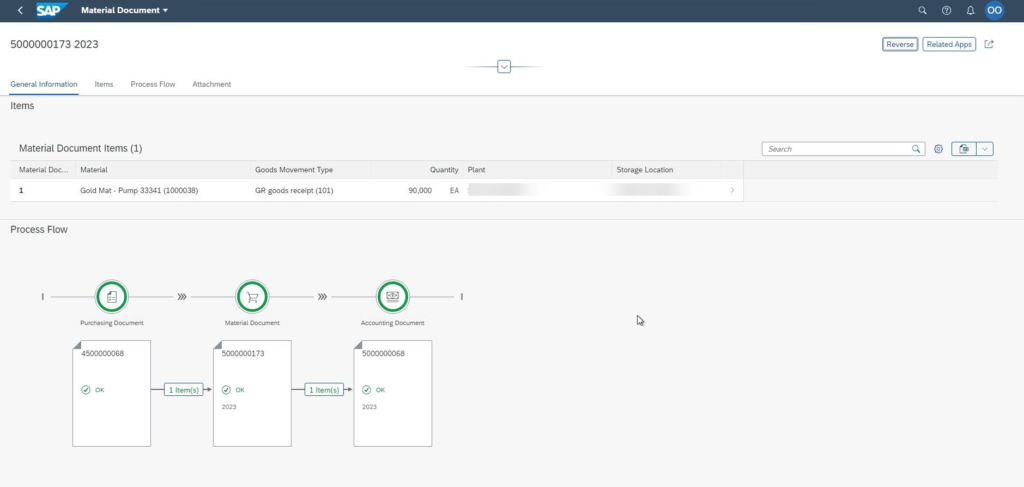
In SAP, goods receipts, goods issues, transfer postings, and stock transfers all represent a specific set of rules in the system. In this mini-series, I plan to give you a very good idea of each critical movement type in the SAP S4/HANA system, which are too many.
Today, my post will touch on the most important movement type in SAP, which is movement type 101. In this post, you will not only get an understanding of what the movement type does, but you will also understand how the movement triggers an accounting posting, and where you can modify that information yourself. The last bit of this is for the consultant, but it is always good to learn that if you are a business expert.
Table of Contents
What is movement type 101?
In SAP, movement type 101 is used to receive stocks into inventory via either Purchase Orders or Production Orders. In its simplest form:
You accept what the vendor provided you based on the Purchase Order contents.
When you want to receive stocks against a Purchase Order, SAP automatically defaults movement type 101 for you. In SAP S4/HANA Fiori, if you want to receive goods against a PO, you will use the app Post Goods Movement app, which is the equivalent of MIGO for those of you of are familiar with the GUI version.

Goods receipt Purchase Order for movement type 101
Once you select the quantity, storage location, and unloading point stock type, you will press on Item ok checkbox and post your document.
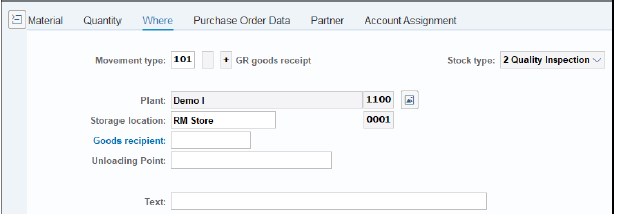
Where tab in Goods Receipt
Types of Account Assignment for Movement type 101:
What is crucial to understand here is what determines the account used to post here is first and foremost if there is an account assignment for the purchase order/production order.
Let’s look at the most common account assignment types.
Non-Account Assigned Purchase Order
The first example is a purchase order without an account assignment. A typical example of this posting is an MRP run scenario or a standard purchase order to a balance sheet account. If the screens below look so foreign to you, you will need to start getting used to it. This is the Fiori App – Manage Purchase orders in the latest SAP S4/HANA release.
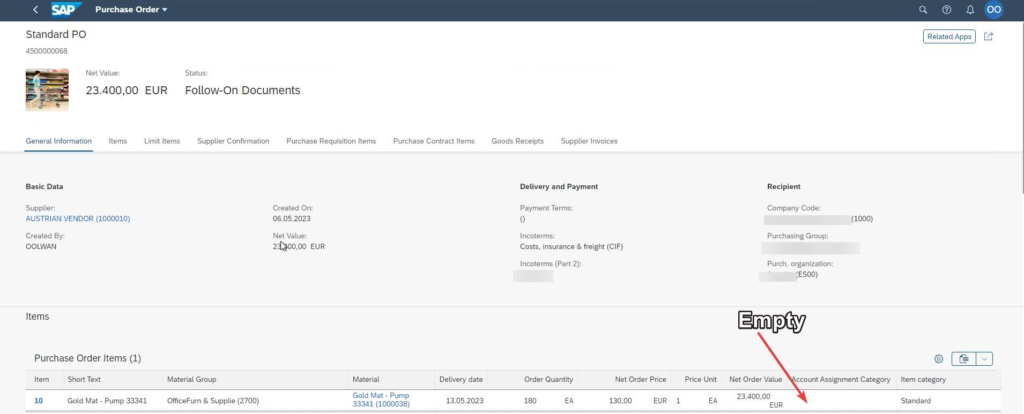
When you post a goods receipt to a purchase order without an account assignment: Two automatic transactions take place:

For a Purchase Order that is not account assigned, transactions BSX and WRX are used, which are the most common transactions used in Automatic account determination in SAP. I introduced the topic of account determination in one of my earlier posts.
At goods receipt with a movement type 101, here is what happens:
BSX: Stock posting account will be debited.
WRX: GR/IR clearing account will be credited.
To help you understand this, think about the WRX as an interim location to store the invoice value that we have not received (yet). So, when you receive the PO, you store the Invoice amount in WRX, until you get the invoice. The WRX, in this case is a liability account, or a balance sheet account.
But this is not it, you also need to understand what happens when you post the invoice. When you pay the vendor, you will use MIRO (Old GUI) transaction or use the Create Supplier Invoice app in SAP S4/HANA and Fiori:

When you use movement type 101, we credit the vendor account and debit the GR/IR clearing account, and by that, we clear the GR/IR clearing account of the liability since we already paid it.
Account assigned PO
If the purchase order item is an account-assigned PO, meaning there is an account assignment category in your PO, for example to a cost center, a WBS, or an Order, then the order is posted to consumption, and not to the warehouse. Let’s look at a case by case for you to understand what is going on behind the scenes:
First, here is how our PO now looks like:
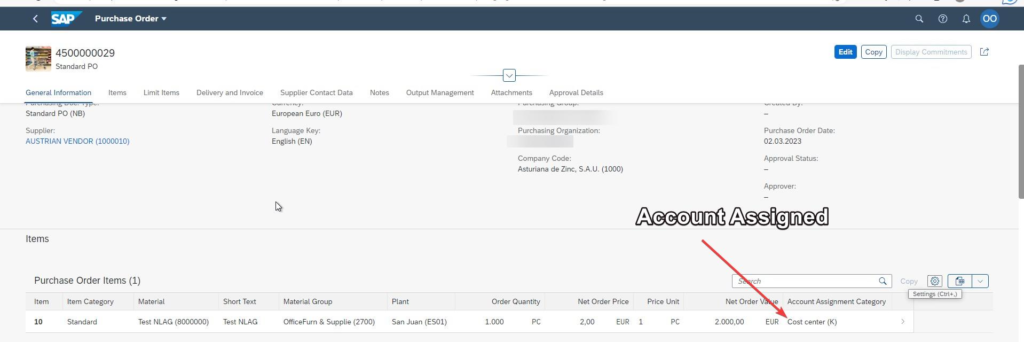
In this scenario, our PO is assigned to a cost center, so SAP automatically asks to provide the cost center:

If you want to assign a cost center to your PO with Account assignment category K, you will need to assign a cost center. In this scenario, our GL 45046014 has been chosen in the PO. If an account assignment exists for the purchase order or order, the goods receipt is posted to consumption, not to the warehouse.
For an account-assigned scenario, you always need a GL to post to, be it an order, a project, a network, or a sales order. This is why the KBS transaction is not derived by account determination on OBYC set up in customizing, see below.
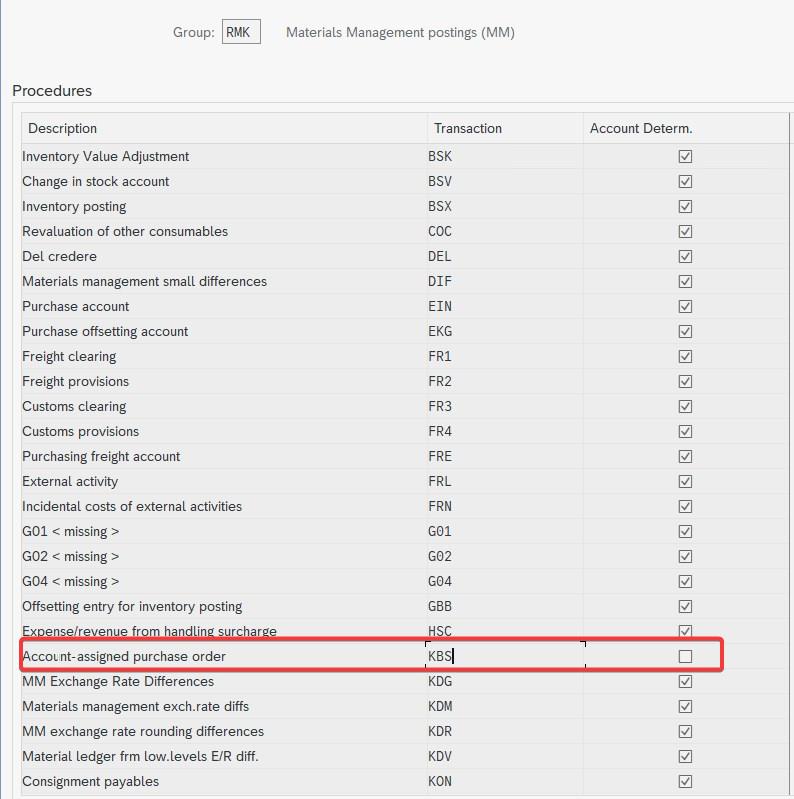

Now let’s go back to the post of an account assigned puchrase order with movement typ 101:
KBS: Stock account gets debited
WRX: Account assigned purchase order account get credited with the GL account coming from the PO.
What is the difference between an account assigned and a non-assigned PO in SAP?
The non-account assigned PO does not have an account assignment category, and therefore the account determination is derived by the valuation class of the material, and the setup of BSX in account determination:
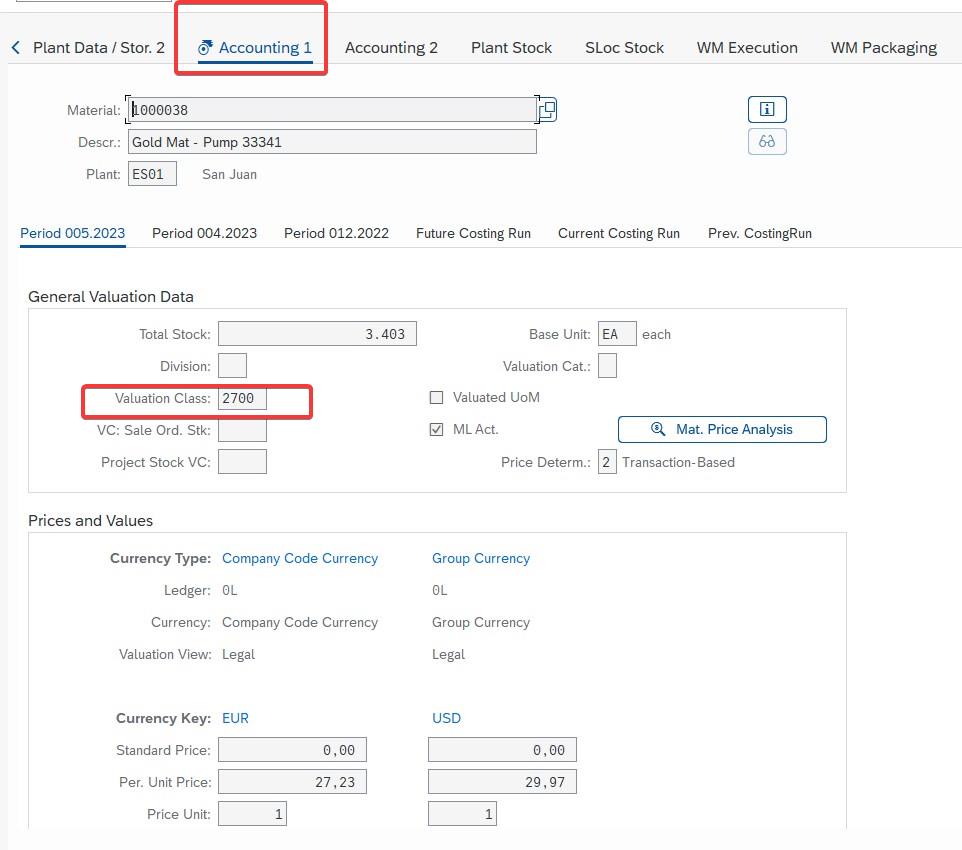
The material 1000038 has valuation class 2700, and in BSX, the inventory posting account is assigned to the GL balance sheet account of 13200100:

Let’s go back to our posting from above:
For an the account assigned Purchase order:
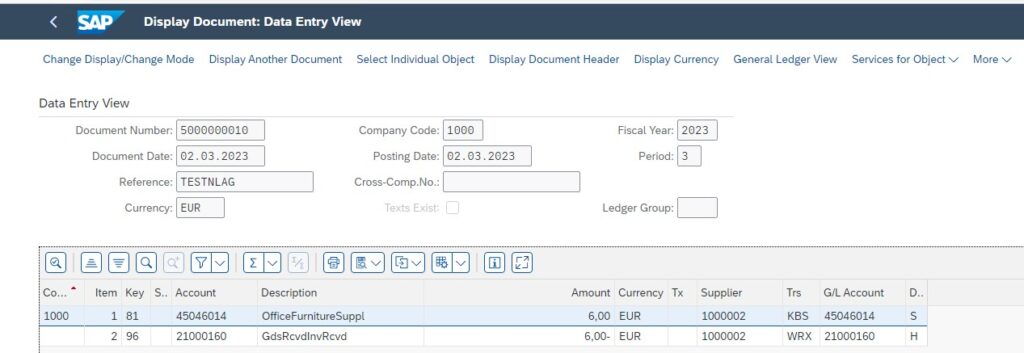
System debits the KBS account, which is the GL account coming from the PO
System credits the WRX account, which is the GR/IR account.
Which reports to use to view movement types?
From a reporting perspective, here are your options depending on which system you are using:
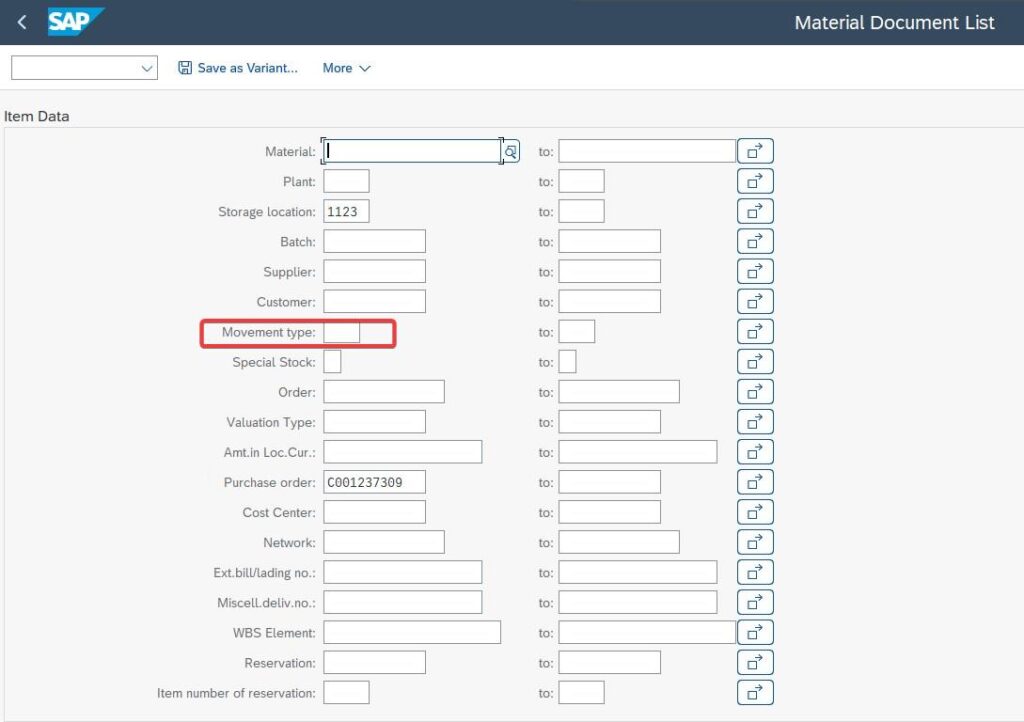
In GUI, you can use the transaction code MB51 or material document list to view the movement type 101:
In Fiori, you can use Material Document Overview, and adapt your filter like the following to add the movement type:
For more information regarding SAP MM Fiori Reports in Sourcing and Procurement, follow this guide.
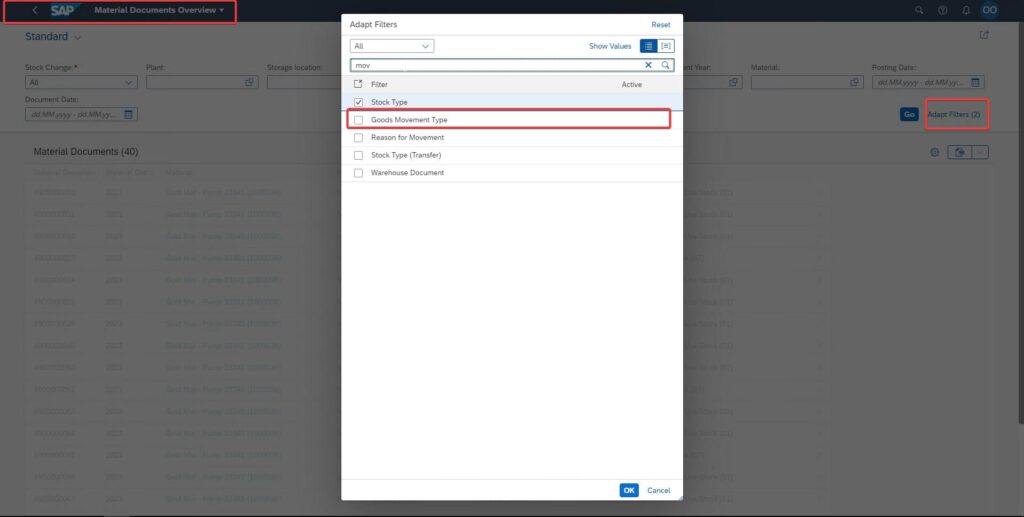
Which SAP table can I use to view Purchase orders with movement type 101?
You can use table MSEG, and field BWART in SE16N
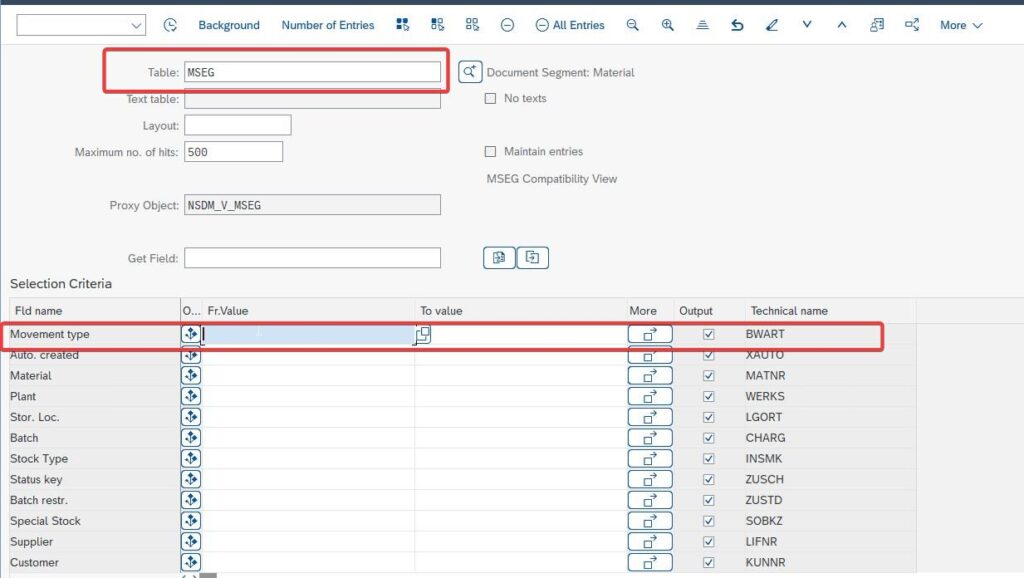
How to cancel movement type 101?
The movement type is canceled by movement type 102.
- Overview of the Material Master in SAP S/4HANA - January 2, 2024
- SAP FICO TRANSACTION CODES (MOST COMMON) - December 24, 2023
- Best SAP S/4HANA MM Books for Beginners and Advanced Learners - November 25, 2023





0 Comments